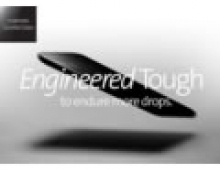
Corning To Develop Sapphire-like Scratch Resistantr Product
Corning unveiled plans to release later this year a new product that combined the advantages of sapphire and Gorilla Glass materials. The announcement was made at the company’s annual investor meeting in New York City by James P. Clappin, president of Corning Glass Technologies.
"Since it was introduced in 2007, Corning Gorilla Glass has defined innovation in the cover glass market," Clappin said. Corning’s continued advancements in cover glass technologies include Gorilla Glass 4 as well as glass material enhancements for improved scratch-resistance, 3D shaping, and several other surface capabilities. We have developed a new product that will provide sapphire-like scratch resistance while maintaining the legendary toughness and break resistance of Gorilla Glass," he added.
Clappin also addressed the strong profit expectations for his business group, comprising the Display Technologies and Specialty Materials segments.
"2015 will be all about large-size LCD TVs," Clappin stated. "This segment of the display industry grew more than 50% year over year on a unit basis in 2014, and our analysis shows that the average TV screen size is growing more than 1 inch per year. Importantly, every inch in screen-size growth equates to about 150 million square feet of additional glass demand."
He noted that this growth comes from three key drivers: sleeker form factors; superior viewing experience, particularly from Ultra HD technology; and an affordable upgrade environment. "The consumer who bought a 40-inch HD TV six years ago, can now get a 55-inch TV for the same price, with a dramatically improved viewing experience."
Corning forecasts the display industry’s total glass market will exceed 5 billion square feet by 2016, with large-size LCD TV viewing area growing more than 30% over this forecast horizon.
Clappin noted that the cover glass market is also expected to grow, powered by the smartphone segment increasing in both unit volume and screen size. Emerging markets, particularly China, are integral to this growth.
New business opportunities for Corning include Iris glass, which enables LED TVs as thin as smartphones by replacing polymer light-guides with a specialized piece of glass; and Gorilla Glass automotive laminates, which weigh 30% less than conventional soda-lime windshields, to help improve fuel economy and meet U.S. regulations that require automakers to double miles-per-gallon by 2025.
Eric S. Musser, executive vice president of Corning Technologies and International, highlighted key product innovations that are expanding Corning’s market reach in the emissions control industry. "We are excited about the opportunity to develop brand new markets for our innovations, like filters for gasoline engines," he said. "We are developing highly effective gasoline particulate filters with major auto makers who are using gasoline direct injection (GDI) technology, and we expect to win platforms this year. This could be a $100 million opportunity for Corning by the end of this decade."
"We also like the opportunities ahead of us in our Life Sciences business in which we have the market position, portfolio, and strategy for growth," Musser continued. "For a full century now, Corning has been pioneering innovations in drug discovery, a distinction that affords us a trusted leader position and a broad customer base, providing stability and growth."





















